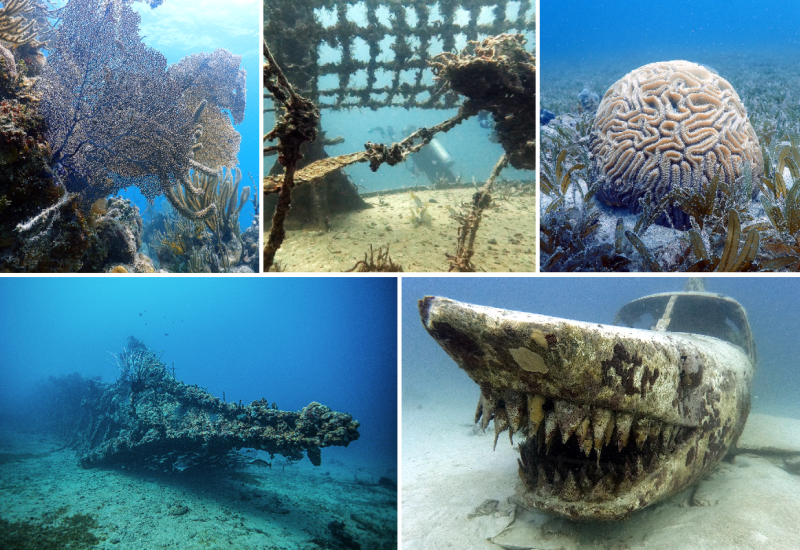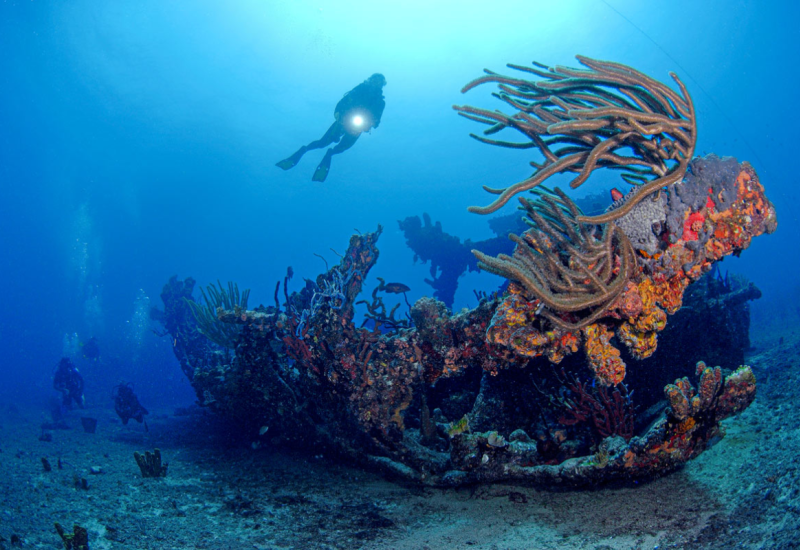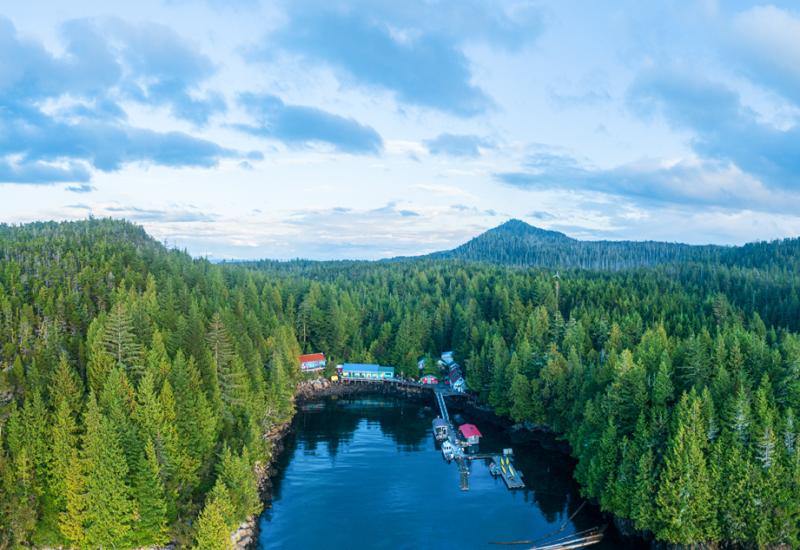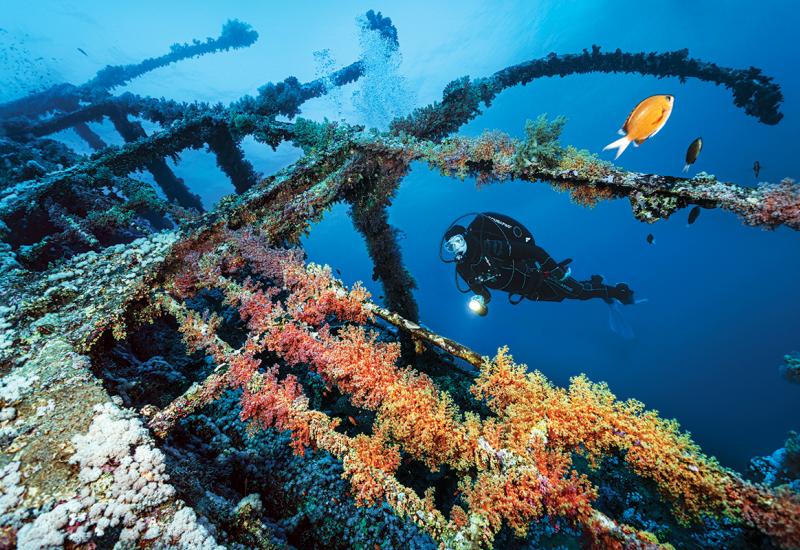A New Dive Site for The British Virgin Islands
KRAKEN GOOD!
What's it take to bring a monster to life? One British billionaire and a dedicated team of artists, engineers and volunteers.
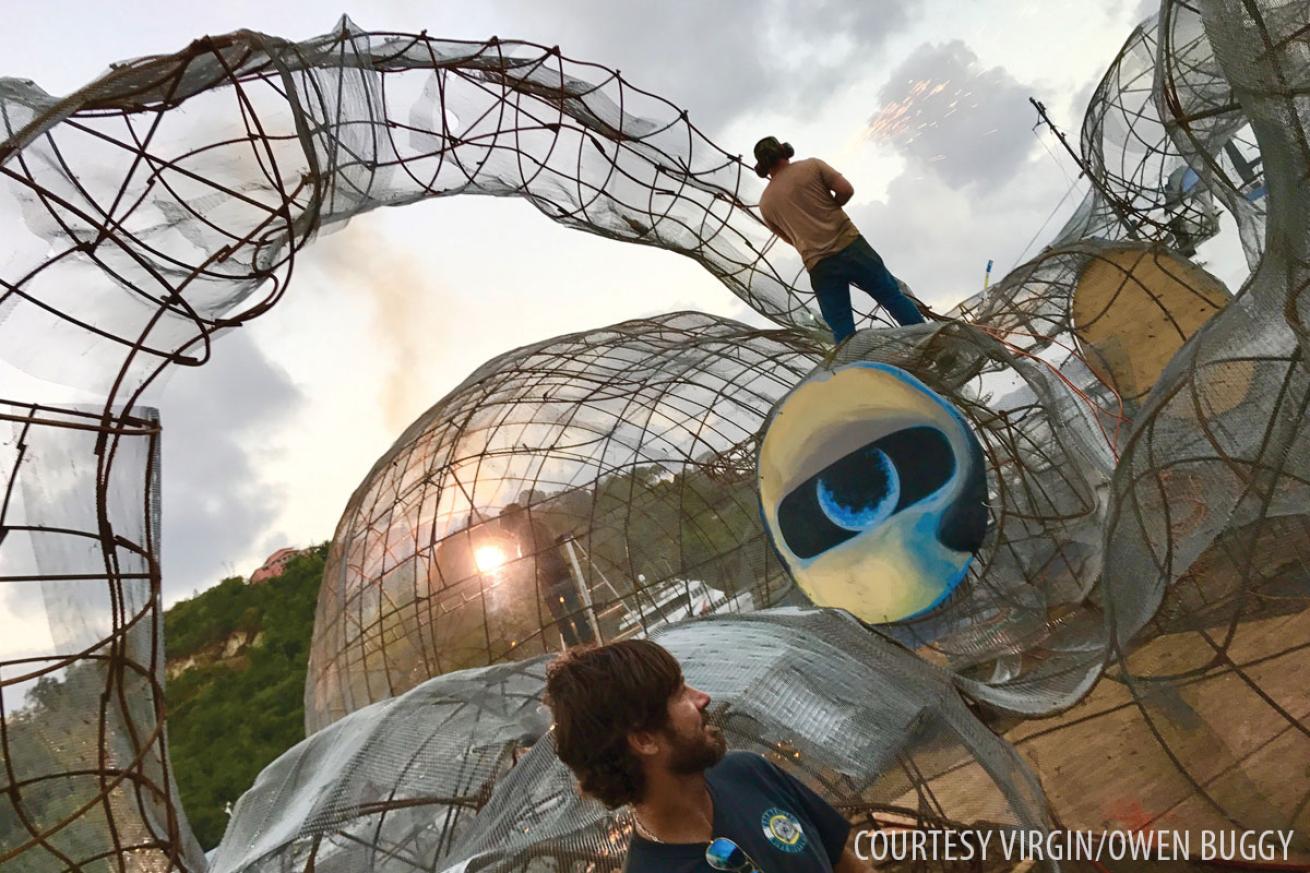
Courtesy Virgin/Owen BuggyKraken underwater art installation
The British Virgin Islands already has a superstar wreck in the RMS Rhone — a royal mail steam packet sunk by a hurricane in 1867 — but now it has something every destination would love: an 80-foot kraken. The monster of the deep is actually a mesh and rebar sculpture attached to a 158-foot World War II-era ship, designed to be both a unique artificial reef and the substrate home of future baby corals. Designing an underwater art installation — estimated to cost around $4 million — is challenging enough, but this one of Virgin Gorda’s Mountain Point is also meant to become habitat for endangered creatures, including grouper.
“A special focus will be on bringing back vulnerable species of grouper, such as the goliath grouper,” says Sir Richard Branson, the billionaire Brit who owns Necker and Mosquito islands in the BVI. Branson is a sponsor of the project through his Unite BVI foundation.
The kraken habitat was designed by Secret Samurai Productions, a team of artists and engineers who seek “to solve real-world problems through art.”
“The kraken is embracing the boat and taking it down to this next life,” Secret Samurai founder Aydika James told The New York Times. “She’s no longer a weapon of war; she’s now a platform for rebirth and regrowth. It creates really fun structural designs that allow for ideal grouper and marine- life rehabilitation habitats inside the head, the ship and the tentacles.”
Branson says the idea crystallized at a brain- storming session on Necker Island on how to create the “most amazing” artificial reef, to encourage tourism, and to creatively approach the problem of habitat degradation and species loss. Through photographer and Branson marine mechanic Owen Buggy, the group hit on the former USS YO-44, renamed the Kodiak Queen, one of only five vessels to survive the Japanese attack on Pearl Harbor in 1941.
Buggy discovered the ship rusting in a Road Town marine junkyard on Tortola, which led to the formation of the BVI Art Reef project. But the environment isn’t the only thing organizers hope will benefit.
“The BVI is surrounded by beautiful coral reefs full of life, yet many people from the BVI have never had the opportunity to learn how to swim,” Branson told Bloomberg news service before the mid-April sinking.
“One of the reasons why I have been supportive of this project is that I believe it will inspire people to want to learn how to swim, snorkel and ultimately scuba dive — my greatest hope is that, as that happens, they will fall in love with the world that lives beneath the surface and will become passionate to protect and preserve it,” Branson says.
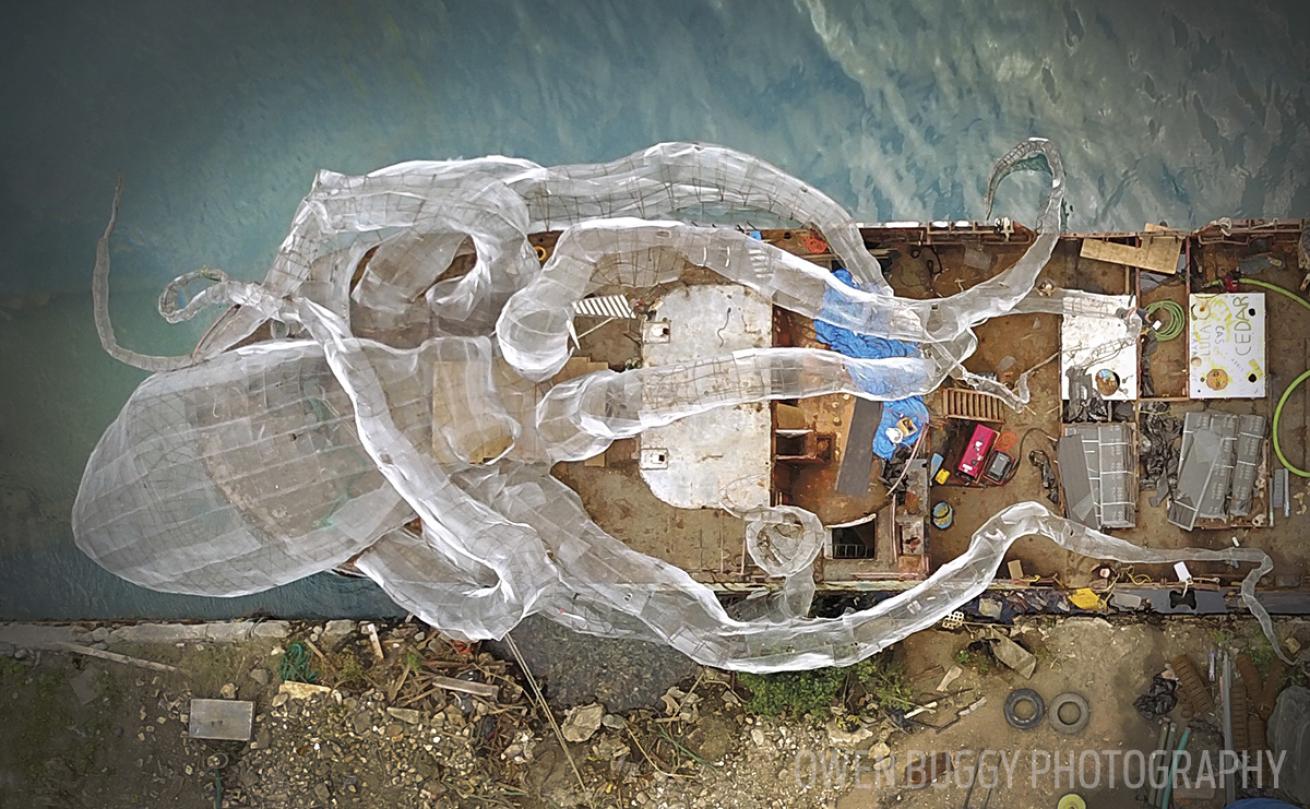
Courtesy Owen Buggy PhotographyBefore the mid-April sinking.
What’s it like to dive with a kraken?
Within weeks of the mid-April sinking, the BVI Art Reef’s Facebook page was full of joyful pictures of young divers playing on the new artificial reef. “So exciting! She’s already coming ALIVE with life!” a mid-May post reports. “A group of baby squids was spotted inside the head of the kraken, schools of fish of all kinds, barracuda.... And a very special person even spent an hour snorkeling with a dolphin on the ship.” (Sir Richard, we presume?) While the site is now officially open, organizers are asking divers to work only with local operators that helped with the sinking process, until all planned moorings have been installed.

